Emergency Government Situation (Civil) Centre
The EmGovSitCen was composed of two civil assessment areas and a closed circuit TV control console:
An Infrastructure Assessment room (including monitoring the state of road, rail and air transportation systems, food stocks, telecommunication networks, ports and harbours, housing, hospitals and medical support systems, law & order, industrial production, agriculture, energy sources, etc.).
A Casualty & Damage Assessment room for tracking the impact on the civil populace of direct attacks on targets within Canada had occurred as well as the effects of the widespread fallout that would have taken place as the result of massive attacks on the multitude of strategic missile fields in the midwest of the US.
EPC Manual for Assessing Casualty and Damage Information
Emgovsitcen staff would regularly provide briefings to Cabinet using the closed circuit TV system. This is the Briefing Format that was followed by the Briefing Officer during the CCTV briefings to the War Cabinet and selected other location in the CEGHQ.
Brief Job Descriptions of the Staff of the EmGovSitCen at the CEGHQ
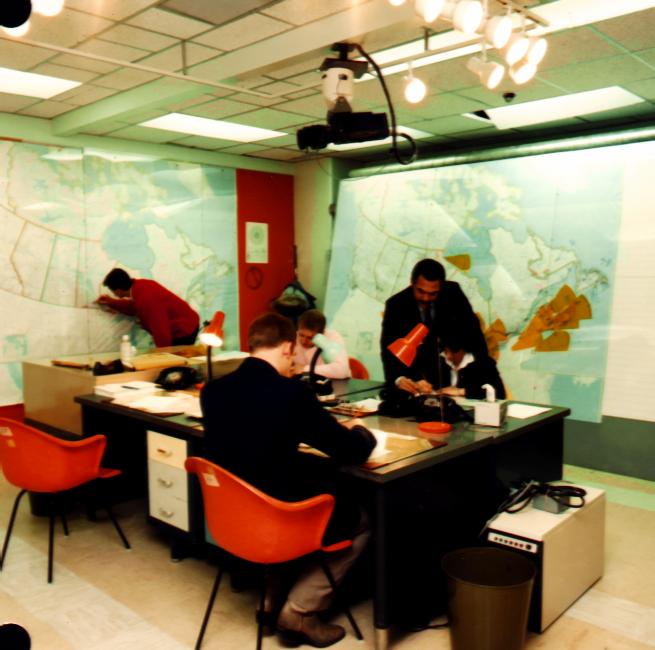
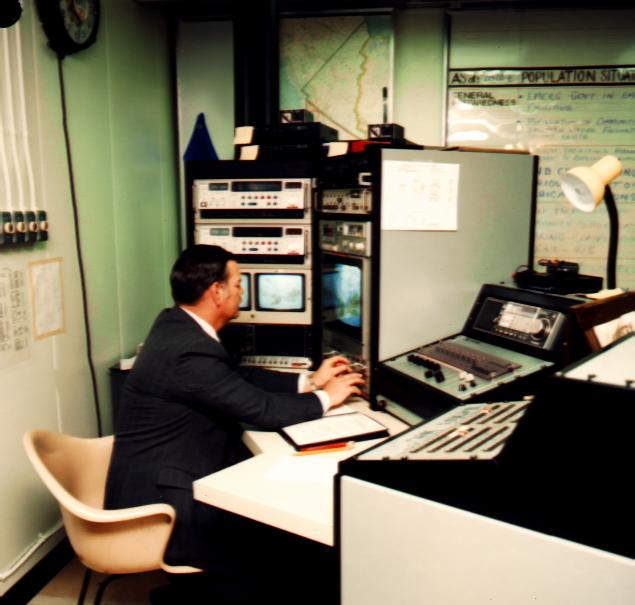
SitCen Manager
- manages the overall functioning of the EmGovSitCen,
- liaises between the Federal Warning Centre, the War Cabinet and departments/agencies to ensure that pertinent information is being collected, collated and disseminated in an timely, accurate and effective manner,
- job shares and backs up the Snr Ops Officer
Snr Ops Offr
- runs the day-to-day operations of the EmGovSitCen (reception, plotting, analysis of casualty & damage and infrastructure damage and impact information),
- prepares and gives periodic and special situational briefings over the closed circuit TV system (and face-to-face with senior officials) as required,
- job shares and backs up the SitCen Manager
Snr Radiation Science Offr
- oversees the collection and analysis of NUDET information messages from NORAD HQs
- supervises the work of the DND NBC Analyst and the Civil CasDam Analyst
- prepares subject related special briefings for senior civil officials
DND NBC Analyst
- analyses incoming NUDET messages and directs NUDET plots and the preparation of fallout patterns and has Map Plotter plot the results on the appropriate wall maps, and display boards ( the NUDET map, the predicted and actual fallout maps),
- calculates the damage and casualty rings for specified targets,
- supports the work of the Civil CasDam Analyst
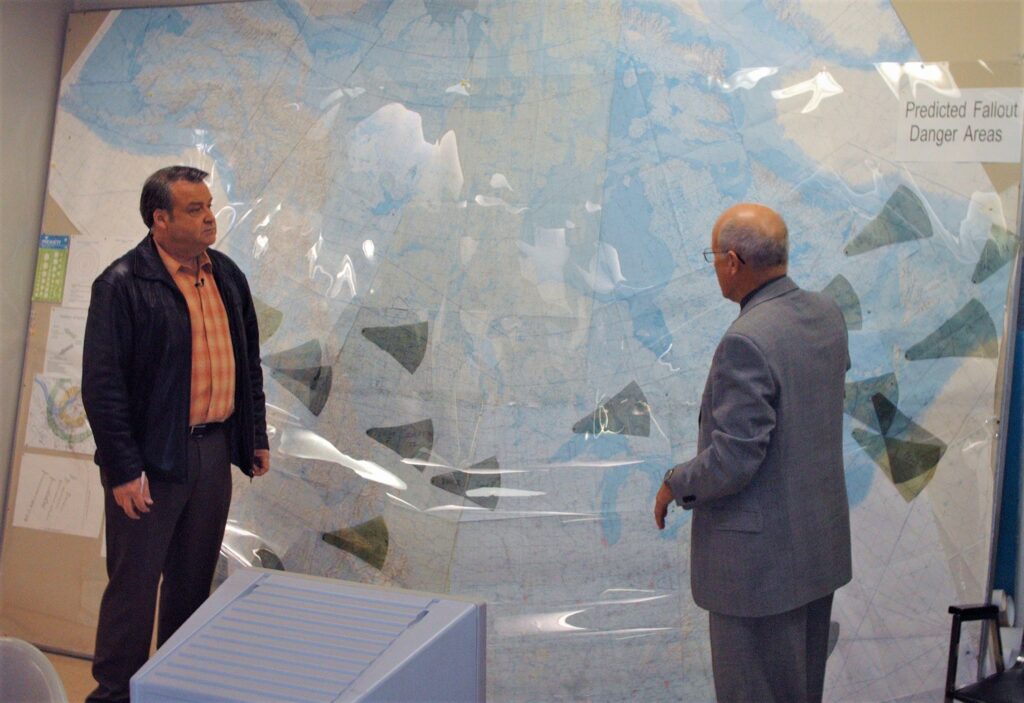
Civil CasDam Analyst
- based on the damage and casualty rings and using appropriate methodology, calculates casualty numbers and rough damage estimates for specified targets (and for the country as a whole),
- has the Map Plotter plot the results on the appropriate wall (city) maps, and display boards
- supports the work of the DND NBC Analyst
Snr Infrastructure Reports Offr
- ensures that the departments and agencies understand the CasDam and other situational information being passed to them and that they analyse and report back the impact of the attack in their respective areas of responsibility to the EmGovSitCen in a timely and accurate manner,
- analyses and summarizes results of the various departments and agencies attack-impact reports for use in the Senior Operations Officer’s situational briefings,
- supervises the Civil Reports Compiler
Civil Reports Compiler
- consolidates and summarizes results of the various departments and agencies attack-impact reports and briefs the results to the Snr Infrastructure Officer,
- recommends significant events and situations in the incoming reports for further analysis and highlighting in the situation report briefings,
- supports and backs up the Snr Infrastructure Officer
Map Plotter
- plots whatever information provided by other members of the EmGovSitCen as required in an accurate and timely manner,
- supports and backs up the Secretary/Admin Assistant
Secretary/Admin Assistant
- provides typing, information retrieval, filing and message preparation services to the staff of the EmGovSitCen as required,
- supports and backs up the Map Plotter
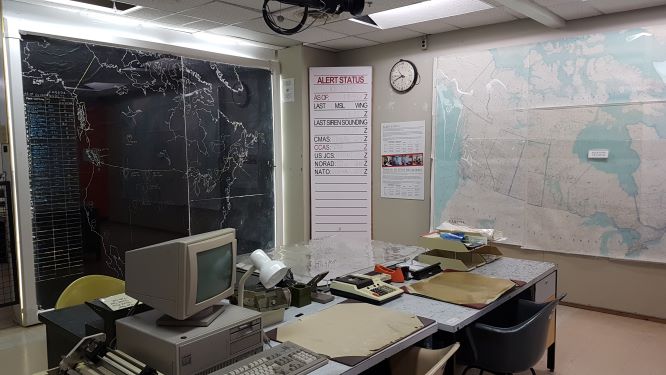
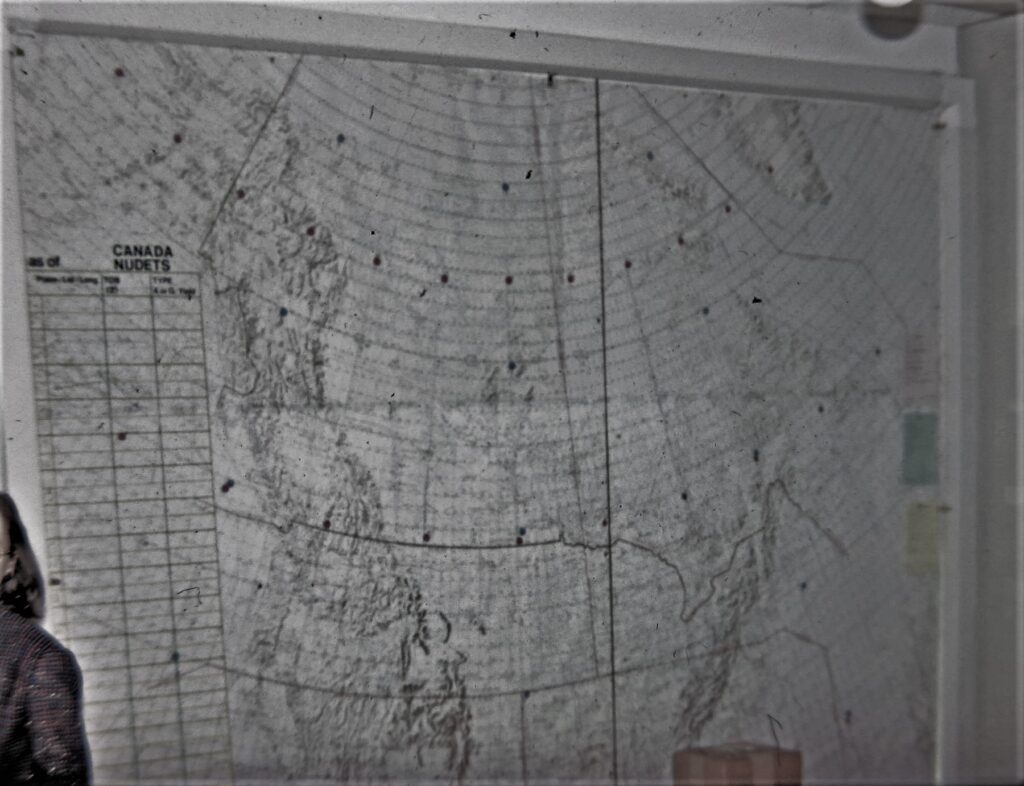
“Key” (1st Key, 2nd Key, 3rd Key, etc.) Series of Central Emergency Government Headquarters (CEGHQ) Readiness/Activation Exercises – Overview and Summary
These exercises were two to three day events held annually (mid Dec 1984-1989) in the CEGHQ, CFS CARP, Ontario. They involved between 40 and 60 federal government departmental officials (usually those whose regular responsibilities included emergency planning and/or response duties).
The object of the exercise was two-fold: Firstly, to familiarise officials with the CFS Carp facility and the duties they would have performed in it if deployed there during a potential nuclear war crisis and secondly, to practice the mechanics of collecting, analysing and reporting/briefing information received from external and internal sources while under stress conditions.

The exercise was conducted in as realistic a manner as possible by means of the following:
a) The facility was locked down for the duration of the exercise,
b) The officials slept in their assigned rooms, worked in their assigned offices and ate in the cafeteria (including one or two meals of hard rations),
c) Inputs came (in the form of teletype messages) from NORAD, and DND briefings from the Military Information Centre/Federal Warning Centre,
d) The public address system was used to create a realistic (and deliberately distracting) background information noise,

e) Briefing of departments and the War Cabinet were frequent time/deadline driven and required constant revision/updating,
f) The shifts were 12 hours long plus 1/2 hour handover briefing, meals had to be taken when the flow of activity permitted,
g) Staff was borrowed from the Emergency Preparedness Training College at Arnprior to do the technical attack fallout and casualty and damage analysis of the nuclear strikes sent to us by NORAD HQ at the Cheyenne Mountain facility,
h) Random (dummy) events involving the security and environmental support systems of the bunker were sometimes inserted to add interest (and as a further source of distraction/interest).
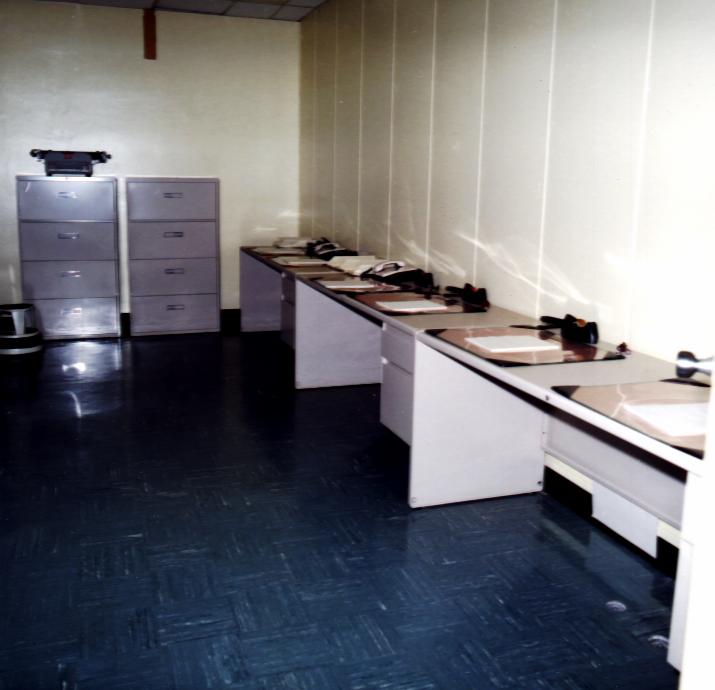
J) While the feed-in events (including NUDETS) were pre-scripted, the responses were not and subsequent free-play was encouraged.
Because we were never fully staffed with the full complement of officials that would have been present for an actual full activation of the CEGHQ , the whole exercise had to be simplified somewhat to enable it to work at all.
The primary centres of play we used had to combine various functions so we organised them as follows (trying to follow the actual organisations as closely as possible).
- Those being exercised namely the EmGovSitCen and participating Departments/Agencies.
- Lower Control – Those providing inputs consisting of the Federal Warning Centre/the Military Information Centre, the Meteorological office, NORAD (and DND), the Emergency Preparedness Canada office (representing Regional HQs, etc.).
- Higher Control – The War Cabinet / and supporting Cabinet Secretariat (where all briefings were aimed at and from where queries would emanate – to be responded to quickly and as concisely and accurately as possible).

